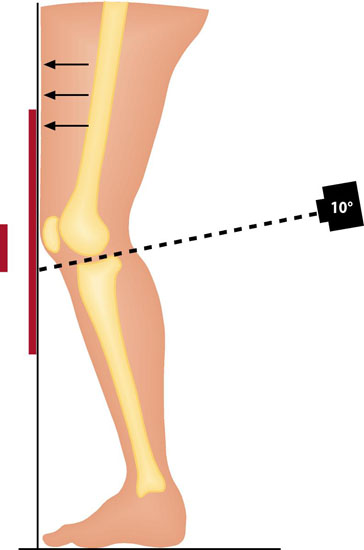A Pa Radiograph of the Knee is Taken in a Standing Position with the Knee Slightly Flexed, Both Knees in the Same Image

A PA radiograph of the knee is taken in a standing position with the knee slightly flexed, both knees in the same image. The patient stands against the imaging rack with the feet 10 degrees outwards so that the toes touch the imaging plate. The patient is then asked to touch the imaging plate also with the knees and thighs along the entire length of the thighs. The X-ray tube is tilted craniocaudally by 10° and the central radius is aligned with the knee joint. The articular surface of the tibia is normally inclined dorsally by about 10 degrees. When the knee is flexed 20 degrees, a craniocaudal tilt of 10 degrees is required to align the rays with the articular surface.
Picture and text: Risto Ojala. Source of the picture: Knee and hip osteoarthritis. A Current Care Guideline. Working group appointed by the Finnish Medical Society Duodecim and the Finnish Orthopaedic Association. Helsinki: the Finnish Medical Society Duodecim, 2018. Abstact available in English at
http://www.kaypahoito.fi/en/ccs00030, full guideline in Finnish at
http://www.kaypahoito.fi/hoi50054.
Primary/Secondary Keywords
- knee
- osteoarthritis
- posteroanterior view
- PA view
- imaging